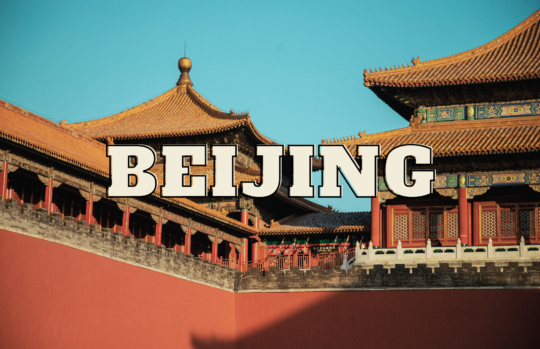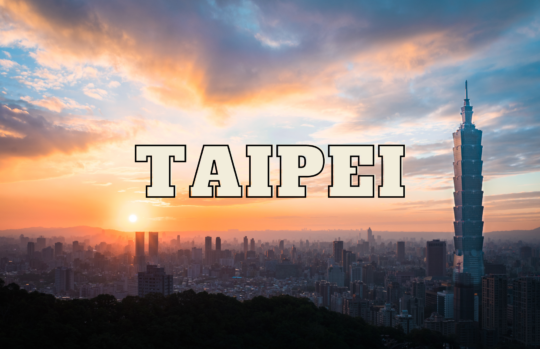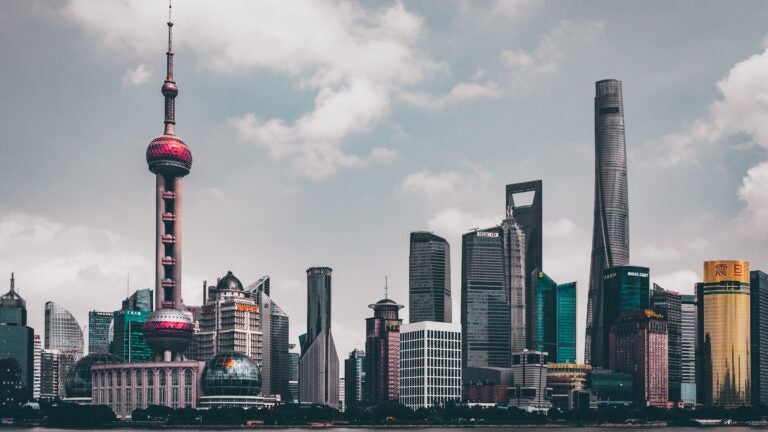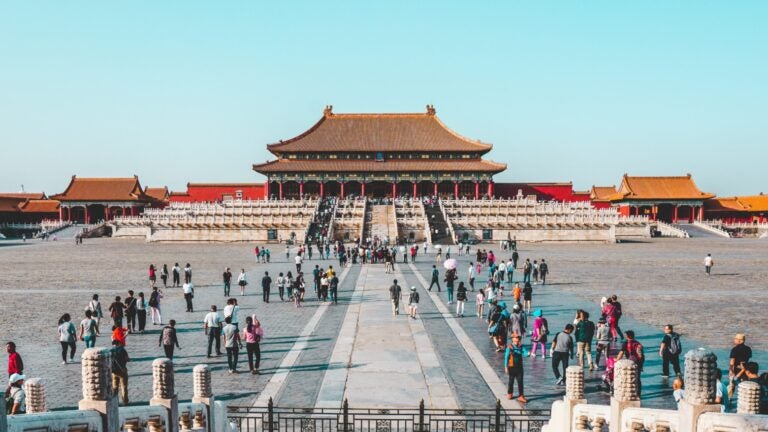
The rising economic and political importance of China is fueling interest in the study of Chinese language, history and culture. As the official language of China and Taiwan, and an official language of Singapore and the United Nations, Mandarin is spoken by over a billion people. According to the Los Angeles Times, enrollment in Chinese language studies has skyrocketed over 8,000% nationally in the last 30 years. In fact, according to the U.S. Government, Mandarin is one of the critical languages for trade, security and diplomacy.
USC Dornsife’s Chinese language program aims to equip students with communicative, literary and cultural competency. Students gain these skills by studying conversational Chinese in our introductory level courses and by deeply examining stimulating issues such as the environment, public health, economics, politics and diplomacy at our advanced level. Whether students major in the humanities, the sciences or the professional schools, studying Chinese provides them with unique cultural insights on their subjects of study and affords them opportunities for cultural exchange, jobs and a well-rounded global perspective.
Minors
Courses
For the courses offered during any given term, consult the Schedule of Classes.
-
The sound system of modern Chinese; aural comprehension, oral expression, basic patterns, and writing system.
Dialogue practice and conversation; reading of simple stories and essays; comparison of Chinese and English grammar; writing of paragraphs.
- EALC 106 Syllabus
- Prerequisite: One from EALC 104 or EALC 103B at USC or its equivalent.
Conversational practice: reading of stories and essays; writing of short essays.
- EALC 204 Syllabus
- Prerequisite: EALC 106 at USC or its equivalent.
Continuation of 204, with emphasis on reading and writing, frequent interaction with native speakers.
- EALC 206 Syllabus
- Prerequisite: EALC 204 at USC or its equivalent.
-
Basic Mandarin conversational skills for effective communication in familiar, everyday Chinese contexts and better understanding of intercultural communication through content-based language acquisition. Graded CR/NC. Not available for credit to East Asian Area Studies, East Asian Languages and Cultures, and East Asian Studies majors and minors.
This course introduces students to the origin of the basic components of Chinese scripts and the basic principles and styles of calligraphy.
The first half of EALC 104. The sound system of modern Chinese; aural comprehension, oral expression, basic patterns and writing system.
The second half of EALC 104. The sound system of modern Chinese; aural comprehension, oral expression, basic patterns and writing system.
- EALC 103b Syllabus
- Prerequisite: EALC 103a at USC or its equivalent.
-
Reading selections from different styles of modern Chinese writings, analysis of stylistic techniques and syntactic structure, composition, and translation.
- EALC 304 Syllabus
- Prerequisite: EALC 206 at USC or its equivalent.
Continuation of 304; composition exercises in different styles of writing.
- EALC 306 Syllabus
- Prerequisite: EALC 304 at USC or its equivalent.
Combined classroom discussion and supervised internship at companies. Practical experience in applying communication and cultural knowledge in a professional, “real world” employment context.
- EALC 366 Syllabus
- Prerequisite: EALC 206 at USC or its equivalent.
-
Readings in modern Chinese literary, documentary, and epistolary styles; stylistic and syntactic analysis; composition; translation.
- Prerequisite: EALC 306 at USC or its equivalent.
Continuation of 404.
- Prerequisite: EALC 404 at USC or its equivalent.
Reading selections from newspaper articles and online reports to further develop proficiency in advanced Chinese and understanding of the society and culture.
- Prerequisite: EALC 404 at USC or its equivalent.
Scholarships
Links to scholarships for learning Chinese language:
Study Abroad
China-Beijing
As the capital of the world’s most populous nation, Beijing is at the center of much of what happens in China. Beijing reflects China’s long and evolving history when different dynasties based here constructed some of the nation’s most well-known and culturally important sites such as the Great Wall and the Summer Palace. In addition to being the political and cultural center of China, Beijing is known as the birthplace of Chinese cinema and modern art.

Shanghai-China
Shanghai, home to more than 23 million people, has seen massive development over the last two decades. The facades of the international trading and banking firms that dominated the skyline along the Bund in their heyday of the 1920’s are now dwarfed by the 21st-century skyscrapers. As a business hub for China and East Asia, Shanghai draws migrants from all parts of China and is a regional base for many multinational firms. The rich culture of Shanghai includes a wealth of museums, performing arts venues, and delicious cuisine. This region of China boasts attractions such as the famous Buddhist temples on Pu Tuo Shan Island, the Yellow Mountains, the tea gardens of Suzhou, and Hangzhou’s West Lake.

Taipei-Taiwan
Taipei is home to around 2.6 million residents, and roughly 7 million people live in the greater Taipei-Keelung metro area. Locals embrace both traditional culture and the evolving modern culture with its democratic institutions. The city’s subway system makes it easy to navigate the city, which offers a wealth of cultural and recreational activities as well as restaurants and night markets serving up all kinds of delicacies. A bullet train whisks riders from the north to south of the island in less than two hours, and thanks to the island’s topography, one can trek deep into the mountains, visit secluded temples and teahouses, and marvel at the river-cut gorges and seascapes of the east coast.

Student Experiences
Taking Mandarin at USC has allowed me to connect more with my identity that I felt had been so long ignored. I’ve been able to learn more about my culture, my ancestors, and feel less removed from them. Learning a language at USC has the potential to unlock parts of you so that might’ve been ignored.

I have found my Chinese classes to be intimate, fun, and supportive. I have made multiple friends in all three of my Chinese classes thus far that I still keep in contact with today. I love this campus network that the East Asian Languages and Cultures department has helped me build, as it has motivated me to continue taking Chinese classes
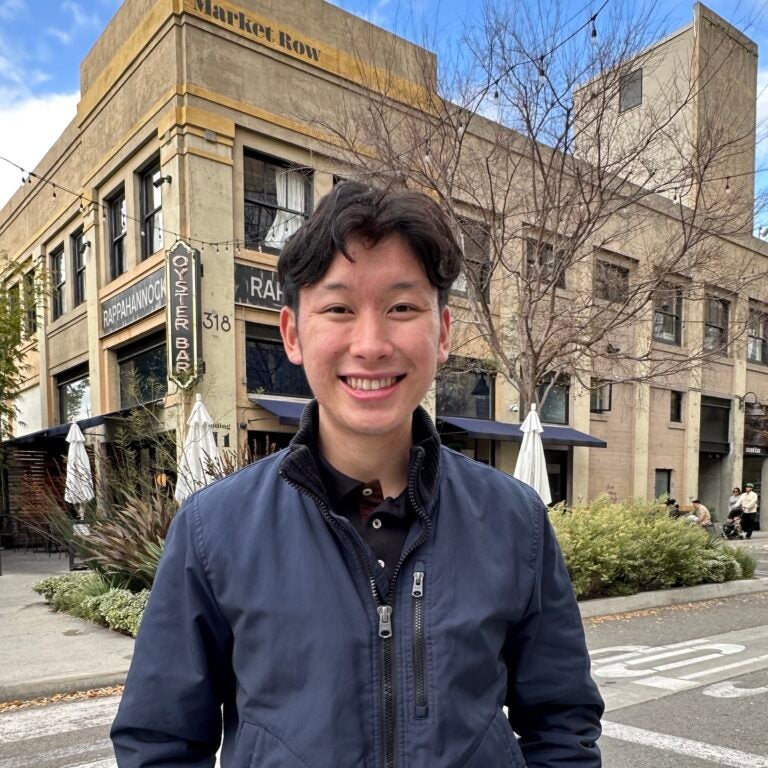
One of my favorite experiences with learning Chinese is being able to speak a Mandarin monologue in a short film that I was lead in. Learning the language of my grandparents while pursuing my passion is one of the most fulfilling things I’ve done here.

Department of East Asian Languages and Cultures
Explore engagement opportunities, panels, workshops, clubs, events and more at the Department of East Asian Languages and Cultures
Events
Access updated information on Chinese language program events
Faculty
Meet the faculty of the Department of East Asian Languages and Cultures, who are eager to guide you throughout your language learning journey!
Contact Details
Office Location
3501 Trousdale Parkway, Taper Hall 356
Los Angeles, California 90089-0357
